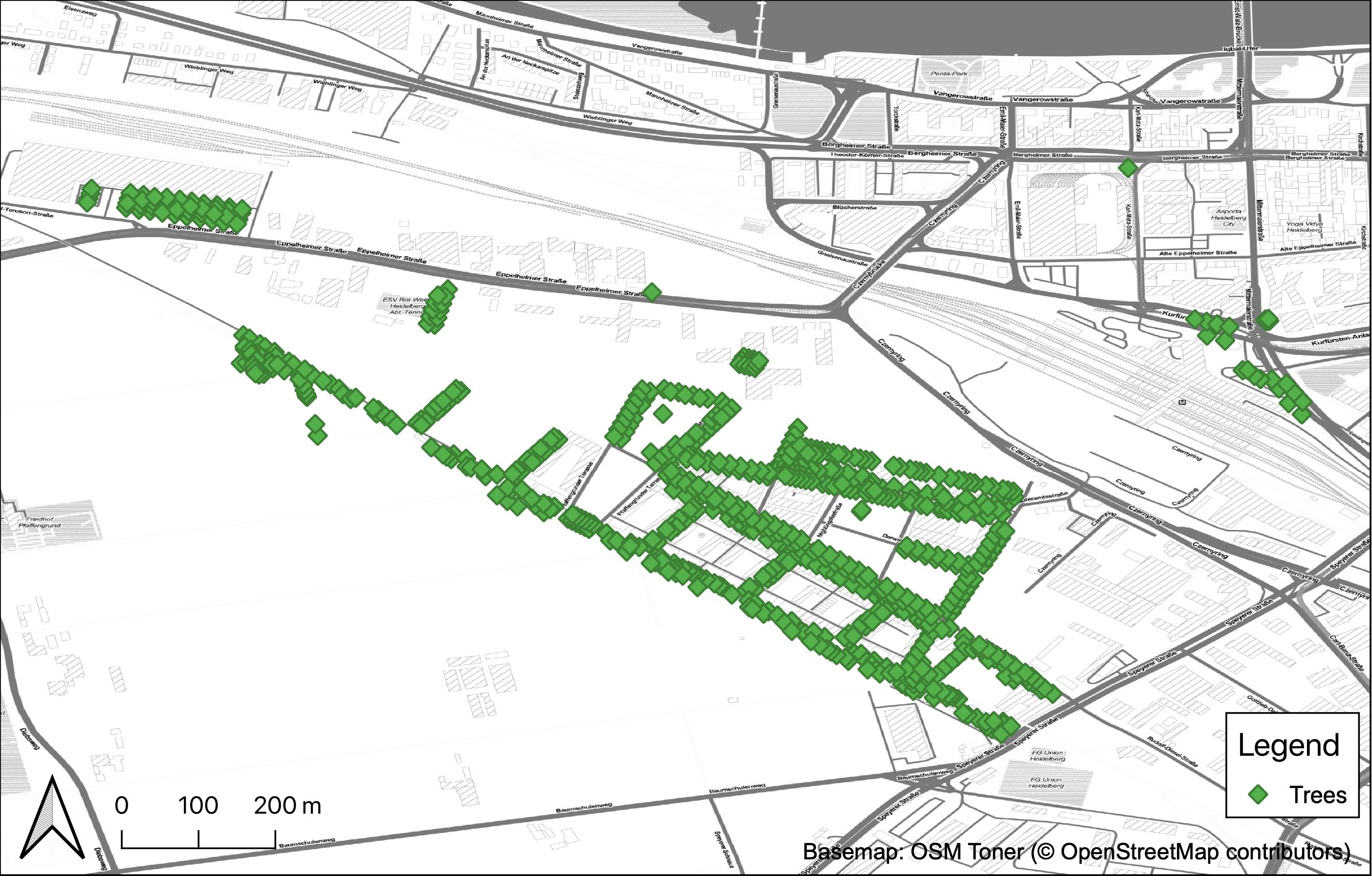APIs: Exercise#
This repository contains a few exercises to practice using APIs to download data. In the first part you will use the ohsome API to download OpenStreetMap data.
1. Downloading OSM data using the ohsome API#
An example request to the ohsome API is contained in the scripts download_trees.bat and download_trees.sh. Adapt the query in the script to solve the following exercises. Refer to the ohsome API endpoint documentation for help.

Fig. 8 Trees in Heidelberg Bahnstadt downloaded via the ohsome API and visualized in QGIS#
Trees over time#
Execute the download_trees script on your computer. You should get a new file called
trees_2024.geojsonin the same folder as the script. Open the file in a text editor, to see if it contains data or an error message.Download the trees for 2 additional points in time: 2015-10-01 and 2018-10-01. Add the additional queries to the script and execute it again. You should get 3 geojson files.
Import the vector files in QGIS to see how the trees in OSM have evolved over time.
Change the bounding box to an area of your choice. Hint: Use this bbox tool to get the coordinates of the area.
Fig. 9 Trees over time in Heidelberg Altstadt downloaded via the ohsome API and visualized in QGIS#
Downloading Restaurants#
Create a new script called
download_restaurants.bat(download_restaurants.shif you are using Mac/Linux). Insert a query to the ohsome API to download all restaurants mapped on Oct 1 of 2024 within a bounding box covering the old town of Heidelberg.If you look at the file in QGIS you might see that some restaurants are mapped as ways (polygons) and some as nodes (points). Let’s assume we are only interested in the locations of the restaurants, but not the building geometries. Adapt the query so the centroids are downloaded instead of the original geometries in OSM.
If you look at the file in QGIS or your text editor you will also see that the OSM features do not contain any tags. Add an additional parameter to the query so that the OSM tags of each feature are downloaded as well. Refer to the documentation.
